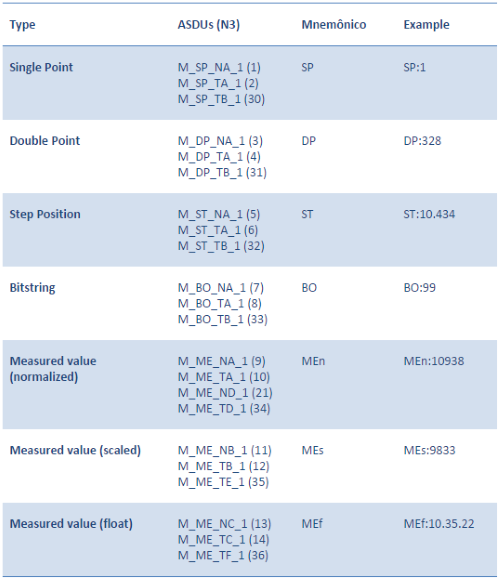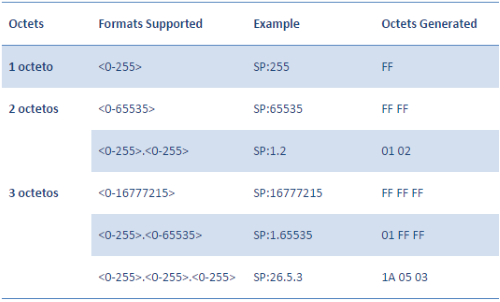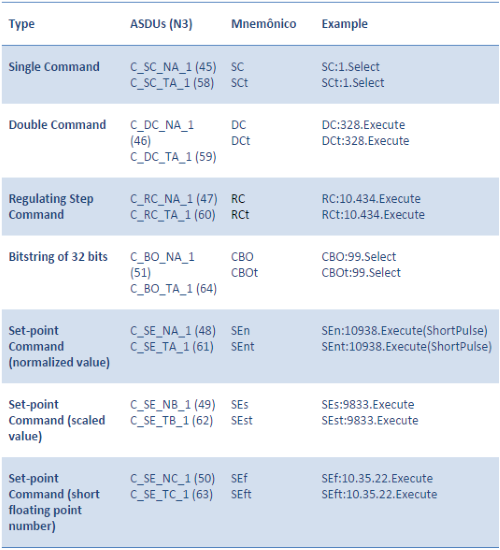Question:
Sometimes, the device’s I/O point address is higher than 65535, which surpasses the 2-octet value supported by conventional parameterization (N parameters). In this case, how can I parameterize the driver’s I/O tags?
Solution:
To do so, you have to parameterize the driver’s I/O tags via strings at ParamDevice and ParamItem fields. This parameterization was implemented at the driver to support addresses longer than 2 bytes that are required by a few devices.
To parameterize tags via strings, you must first reset the N parameters. Then place the PLC address at ParamDevice field and the tag address at ParamItem.
The syntax at ParamItem field for monitoring data is:
:[]
Where:
is the datatype’s mnemonic: SP, DP, ST, BO, MEn, MEs, MEf. The colon (:) separating the mnemonic from the object’s address is optional. The table below displays the monitoring datatypes and their mnemonic symbols:

is the tag’s address, which could be displayed in one of the following formats:

is an optional character that sets up the priority with which data is sent (in case of a slave driver):
- when the character is omitted, data is sent with default priority (digital data with high priority, analog data with low priority; default priority can be configured at the driver’s settings)
- when the character is an exclamation point (!) , data is sent with high priority. Example: SP:255!
- when the character is a less-than sign (<), data is only sent in the next general query. Example: SP:255<
- when the character is an equals sign (=), data is sent with low priority . Example: SP:255=
The syntax at ParamItem field for (master driver only) commands is:
:.[()]
Where:
is the datatype’s mnemonic: CBO, CBOt, DC, DCt, RC, RCt, SC, SCt, SEn, SEnt, SEs, SEst, SEf, SEft. The colon (:) separating the mnemonic from the object’s address is optional. The table below displays the monitoring datatypes and their mnemonic symbols:

is the tag’s address, which could be displayed in one of the following formats:

is the command type, which could be:
- Select: selects the command
- Execute: executes the command
- Deactivate: deactivates a previously sent selection
is an optional parameter, to be informed between parenthesis. The available options are:
- (LongPulse): sends a long pulse
- (ShortPulse): sends a short pulse
- (PersistentOutput): generates an output with persistent value
- Omitted: no qualifier specified
